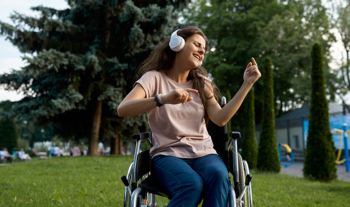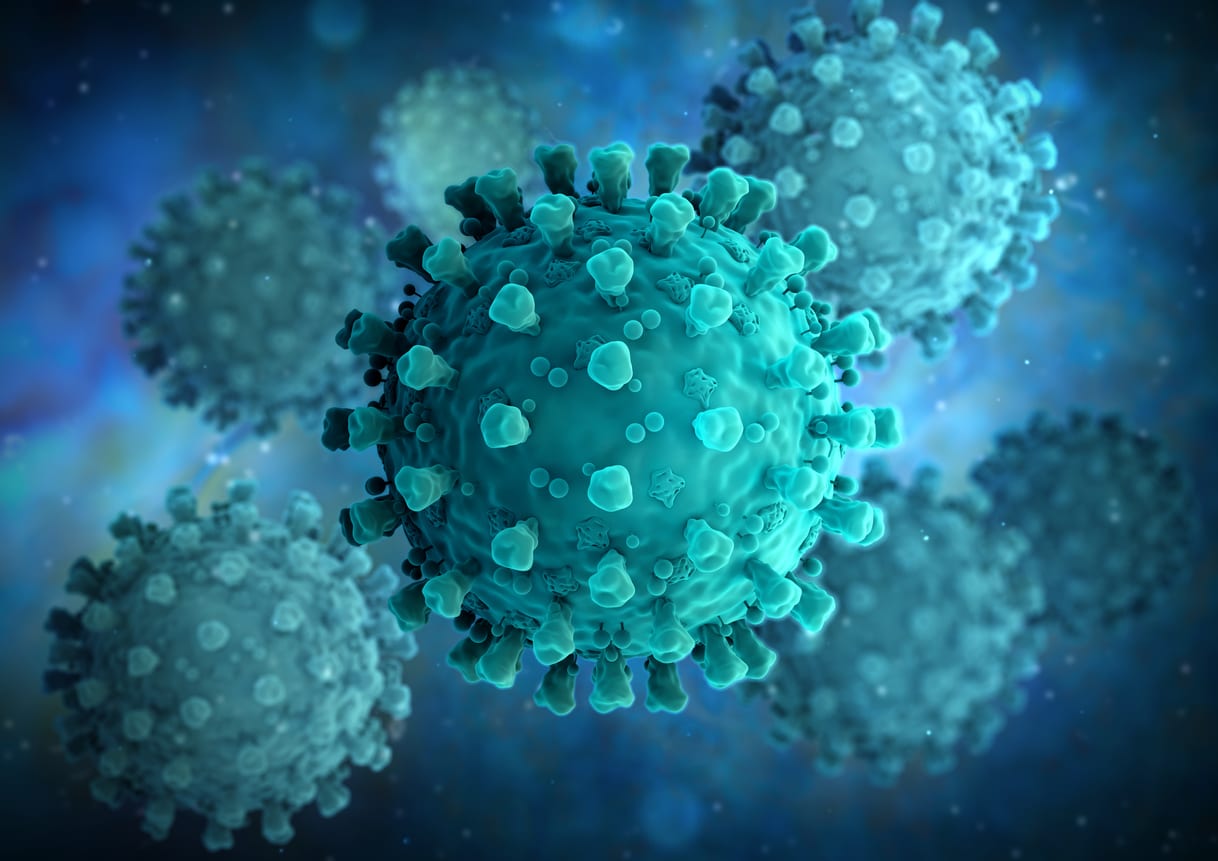The saying “teamwork makes the dream work” applies to people of all ages and backgrounds. Even Iron Man, awesome as he is on his own, must join forces with the Avengers to battle intergalactic adversaries threatening to destroy the universe.
While the Avengers team is fictitious, it serves as an inspiration. It shows how individuals from different backgrounds with various skill sets can come together to fight for a common cause.
We believe that Avengers-like teamwork and collaboration is needed to reach the audacious goal of Your Autoimmunity Connection to
reimagine research, diagnosis, and care for all autoimmune diseases.
Collaboration is key in autoimmune disease
For years, we and other patient advocates have called for coordinated care between disciplines involved in autoimmune disease. Now, with the incidence and prevalence of autoimmunity on the rise, the most effective way to treat patients is through a broad collaboration. One that includes
- research and clinical immunologists
- rheumatologists
- dermatologists
- neurologists
- cardiologists
- psychiatrists, and
- others
Collaboration and the Interdisciplinary Autoimmune Summit
I (BF) recently attended the Interdisciplinary Autoimmune Summit 2019 that was held in Chicago, April 5-7. The theme of many of the presentations was interdisciplinary collaboration.
It was extremely heartening to hear a renowned academic, Leonard Calabrese, DO, echoing this call to action. Dr. Calabrese is the Cleveland Clinic Lerner College of Medicine professor and RJ Fasenmyer Chair of the Department of Immunology. He stated that
“we are very subspecialized and we tend to live in silos…Collaboration is important across disciplines in both the basic sciences and clinical practice.”
Interdisciplinary collaboration is essential not only on the clinical side but also in the field of drug development. Tens of years and hundreds of thousands of dollars are invested into research before a drug is discovered, developed, approved, and on the market.
Along the way, pharmaceutical researchers and clinicians often gain a new understanding of molecular pathways or underlying mechanisms of a certain disease. Some of this knowledge may provide insights into other diseases. Interdisciplinary collaboration facilitates this process.
Related content: Understanding Systemic Sclerosis (Scleroderma)
Advances in clinical and basic immunology
To start off the conference, Dr. Calabrese presented an overview of recent advances in clinical and basic immunology. He drilled down on four different areas as shown below:
1. Inflammation
Interleukin-1 is the first of what is now a family of 11 chemical messengers (cytokines) that regulate inflammatory processes. It was discovered through studies that explored possible connections between fever and other types of inflammation in animals and humans.
IL-1 occurs in two forms called alpha and beta. It is a powerful pro-inflammatory cytokine. Over decades of study, IL-1 has emerged as a target for drug intervention. The hope was that reducing IL-1 could inhibit processes leading to cardiovascular and other diseases.
–C-Reactive Protein
C-Reactive Protein (CRP) is a biomarker of inflammation. It is produced by the liver in the presence of any inflammation, including infection and autoimmune diseases such as Rheumatoid Arthritis.
Measures of CRP in the blood are used as a proxy for blocking IL-1, however, the correlation with clinical benefit has been unclear.
Recent research theorized that blocking IL-1 via canakinumab (a monoclonal antibody biological) could reduce cardiovascular events and mortality. However, when tested in the CANTOS trial, this approach fell short of producing significant results.
Regardless, the scientific community did not turn their backs on the IL-1 target. Instead, they looked at inhibition of the IL-1 pathway in various metabolic syndromes. For example, they tested whether IL-1 inhibition could reduce progression from prediabetes to diabetes? Unfortunately, research trials found no statistically significant protection from progression to diabetes.
–Can IL-1 inhibition be applied in cancer therapies?
Research has found that Rheumatoid Arthritis patients have a higher incidence of comorbid lung cancer. Inhibition of IL-1 (as measured by CRP) in Rheumatoid Arthritis patients might mitigate symptoms of arthritis as well as minimize cancer risk. However, clinical trial results are still inconclusive. Calabrese described this as a “cup half empty, cup half full” situation.
Although the definitive benefit of IL-1 inhibition and development or progression of various diseases has yet to be proven, future research may yet demonstrate a link with inflammation or possible associations with inflammatory pathways.
2. Telomeres and aging
Attached to the ends of each of our chromosomes (as well as in other mammals) are long strands of repetitive nucleotide sequences called telomeres. They protect the chromosome from deteriorating during replication.
Telomeres grow shorter as we age. Genetics play a significant role in telomere shortening as do environmental exposures and individual lifestyle behaviors.
Telomere length offers an easy-to-test, but very general, view of biological (vs chronological) age.
–The mTOR pathway
Another molecular pathway that scientists have been analyzing for a better understanding of aging is the mTOR pathway, a molecular complex encoded by the mTOR gene.
The mTOR pathway is involved in regulating many critical cell pathways, including:
-
-
- energy sensing,
- cell division,
- cell trafficking, and
- other metabolic pathways.
-
Inhibiting mTOR in the appropriate way may increase longevity.
Within the mTOR pathway, there is a pivotal switch that leads to two downstream pathways, mTOR1 and mTOR2.
Inhibition of the mTOR1 complex and increasing mTOR2 results in longer life in mice. While this sounds like an easy fix to lengthen human lifespan, finding a biologic to accomplish this has proven to be much more difficult.
In the search for the perfect molecule that would effectively inhibit mTOR1 and not mTOR2, researchers discovered that mTOR pathway inhibition also
-
-
- enhances immune function
- reduces infection in the elderly
- improves response to influenza vaccine.
-
3. The never-ending microbiome
The microbiome is perhaps the latest gold mine of research endeavors. Omics studies and technological advances now allow for better characterization of bacterial strains/species that inhabit our gut.
Fecal transplant is the best-known therapy involving the gut microbiome. In the world of autoimmune diseases, it has been shown to improve symptoms in Inflammatory Bowel Disease (IBD) patients.
Now, researchers have begun to look into how fecal transplants may help fight infections and cancer. Researchers managed to isolate 11 bacterial strains that enhanced cancer checkpoint inhibitor (CPI) therapy in two tumor models in mice.
Further research on the microbiome has produced other noteworthy findings, demonstrating that the human microbiome may be relevant in most, if not all, fields of medicine.
This year’s surprising research findings include:
- The womb is not sterile!
- The vascular microbiome is different for those with inflammation in their vessels.
- Probiotics may be specialized for each individual. Our current thinking: taking probiotics along with antibiotics may not be universally effective depending on which species different people repopulate their microbiomes with.
- The immune response may be related to the microbiome and might explain why checkpoint inhibitors work for some folks and not others.
4. What’s Up With JAK?
The Janus Kinases (JAKs) are a family of intracellular tyrosine kinases. They provide transmission signals from cytokines, interferons, and many hormones receptors to the nucleus.
These signals result in the synthesis of many biologically active compounds and changing cell metabolism and function. With this ability to transmit cytokine-related signals, JAKs play a key role in proper function of innate and adaptive immune systems as well as an important role in such pathophysiological processes as hematopoiesis, immune cells development, and many others.
Until recently, JAK inhibitors were known to have safety issues. In fact, one of us (BF) worked at SGX Pharmaceuticals which created an early JAK inhibitor that failed preclinical safety trials.
Yet, as shown below, this year “JAK Inhibitors are Coming of Age” New indications include ankylosing spondylitis, lupus, psoriatic arthritis, and others autoimmune diseases. The drug is available in both oral and topical formulations.
The Science of Wellness: The Brain-Body Connection
Another topic explored at the conference was the role of mental health providers, psychiatrists in particular, in the management of autoimmune disease. We know that mental disorders are generally approached and treated independently from the rest of the body. Speaker Saundra Jain MA, PsyD, LPC jokes,
“psychiatry takes care of the neck up, and everyone else takes care of the neck down.”
However, with recent research that shows mental disorders, such as depression and anxiety, may play a role in inflammation (and maybe vice versa), Jain and her colleague Andrew Laster, MD, FACR discussed the importance of including mental wellness into disease treatment plans.
Explaining the Brain-Body Link
Understanding the brain-body link in autoimmune disease requires a general understanding of psychoneuroimmunology (PNI). PNI is a convergence of disciplines including
- behavioral science
- neurosciences
- endocrinology
- immunology
More specifically, the field looks at three systems: nervous, endocrine and immune.
In short, the systems are all bidirectional and are able to communicate with each other through neurotransmitters, hormones, and cytokines. As a result, the presence of psychosocial stressors affecting one system causes a domino effect on all the systems.
–The blood-brain barrier
It was once thought that the blood-brain barrier (BBB)— a border that separates the circulating blood from the brain and cerebral spinal fluid (CSF) in the central nervous system, was mostly, as the name implies impenetrable to chemicals.
A new understanding of the BBB, however, is that it is a highly selective semi-permeable barrier, allowing only smaller molecules, such as cytokines, access to the brain.
Proinflammatory cytokines are produced by activated macrophages in response to psychosocial stressors. They can then pass through the BBB and activate microglia within the brain.
These microscopic interactions may seem inconsequential. However, research conducted on study participants with major depression found that additional psychosocial stress can induce inflammatory responses through increased levels of IL-6 (cytokines).
Of note, patients with Rheumatoid Arthritis had a significantly higher baseline and stress-induced levels of proinflammatory cytokines compared to healthy controls.
From these findings, Jain and Laster concluded that psychiatrists and other mental health providers, ought to be included in the conversation of interdisciplinary healing teams and mental wellness practices incorporated in treatment plans.
Five wellness-enhancing behaviors
Jain and Laster recommended these five wellness-enhancing behaviors and practices:
- Exercise:
Obesity itself is an inflammatory state. However, whether you are obese or not, exercise has been found to alter IL-6 cytokines from their proinflammatory trans-bonded state to their anti-inflammatory cis-bonded state. While some people may choose to hit the gym or go for a five-mile run, those that want to start out at a lower intensity can find more exercise options here.
2. Sleep:
Sleep deprivation has been shown to increase cytokine production in monocytes and macrophages. Sufficient, restorative sleep has numerous additional benefits on top of cytokine reduction.
3. Nutrition:
While there are many foods that are anti-inflammatory, Dr. Jain discusses the Mediterranean diet as having anti-inflammatory results, lowering levels of CRP, IL-6 and other inflammatory proteins. If dietary restrictions are a concern, perhaps look into other diets that also reduce inflammation.
Related Content: New Medical Nutrition Therapy for Patients with Malabsorption
4. Mindfulness:
Mindfulness has been shown to downregulate inflammatory genes. Not to mention, long-term meditation practices may reduce stress reactivity and have therapeutic benefits in chronic inflammatory conditions characterized by neurogenic inflammation.
5. Social Connectedness:
Do friends really matter? Jain references research studies that found people who had more friends and more social network ties also had lower levels of inflammation, fibrinogen, and albumin.
While the above-mentioned wellness behaviors and practices are great, there are many other methods that can also be incorporated in daily life. Practicing good, well-informed oral care is another good way to enhance wellness practices.
Medical homes and IBD
By creating and coordinating a multidisciplinary team of specialists, nurses, dieticians, social workers and psychiatrists, a so-called medical home can provide the “one stop shopping’ that inflammatory bowel disease (IBD) patients need.
The idea of a medical home is something that we have been dreaming of ever since 2014, resonating with our findings from our Stanford Medicine X workshop. It puts the patient at the center of care, using home visits, coordinated scheduling, management of pharmaceuticals, even telemedicine and digital tools, to more smoothly coordinate care, prevent emergency visits, improve patient outcomes and satisfaction, all while lowering cost of care to the system. Sounds visionary, doesn’t it?
I was excited to meet Dr. Miguel Regueiro, MD and learn about his pioneering work aiming to incorporate the concept of a medical home for IBD patients.
“For the treatment of IBD patients, we need better communication and collaboration between primary care and the GI docs.”
In addition to using the team approach to support patient care, (above) there are new digital tools, such as remote monitoring and telemedicine, that can act as supportive devices for patients to reach their care team between appointments. (below)
The good news is that not only did IBD patients benefit from this holistic care redesign, but they also experienced cost savings associated with implementing this approach.
The medical home in IBD is currently being applied at the Cleveland Clinic, UPMC, Allegheny Health Network, and UCLA. We can’t wait until next year’s meeting where we hope to hear about the progress of other medical homes in other autoimmune diseases.
Conclusion
Collaboration is needed throughout the entire autoimmune disease management process. This applies to research, diagnosis, treatment, and care management.
Overall, the 2019 Interdisciplinary Autoimmune Summit was an excellent update and overview of the valuable potential of collaboration to reimagine research, diagnosis, and care for autoimmune patients.
Ellen M. Martin was a co-author of the original story.
Bonnie Feldman, DDS, MBA
Website:
http://www.drbonnie360.com
Dr. Feldman is an autoimmune patient advocate and an expert in digital health, the oral and gut microbiomes, and immune-mediated diseases. She is a frequently invited speaker and panelist at national and international conferences including TEDx, SXSW, and Stanford Medicine X.
Currently, she is the Founder and CEO of Your Autoimmunity Connection, a consultancy that through research, consulting, and other professional services, assists clients offer innovative products and services to people with chronic immuno-inflammatory diseases.
Previously, Dr. Feldman was a practicing clinical dentist. As a dentist, she built two dental practices and a consulting business from scratch. Then, armed with an MBA in finance from the UCLA Anderson School of Management, she worked on all sides of the Wall Street equation - sell side, buy side, and investor relations.
Her multimedia work has appeared in numerous online venues such as Forbes, Medium, Tincture, and Thrive Global. She has also been featured in podcasts and documentaries, written various white papers demonstrating deep subject expertise, and created presentations and blog posts that demonstrate her exceptional skills in the art of science storytelling.
Motivated by her desire to help future generations thrive, Dr. Feldman takes her four lenses (dentist, Wall Street analyst, digital health consultant, and patient) to seek out solutions that provide the best of conventional, functional, and digital medicine to improve chronic disease management for all patients.



















Comment will held for moderation